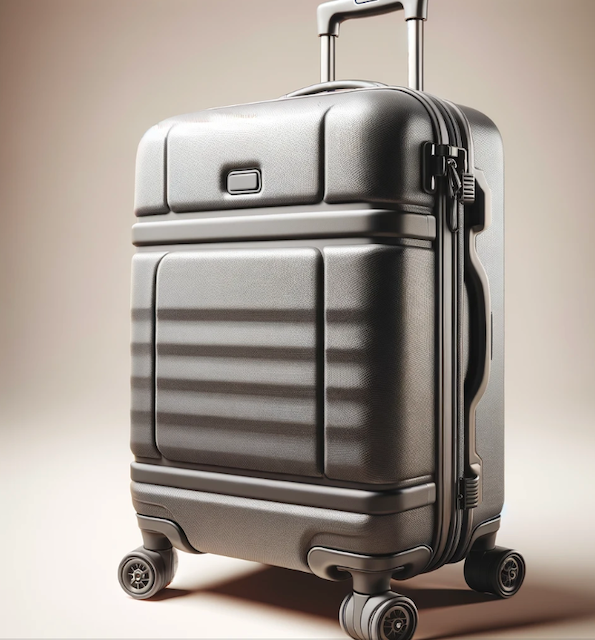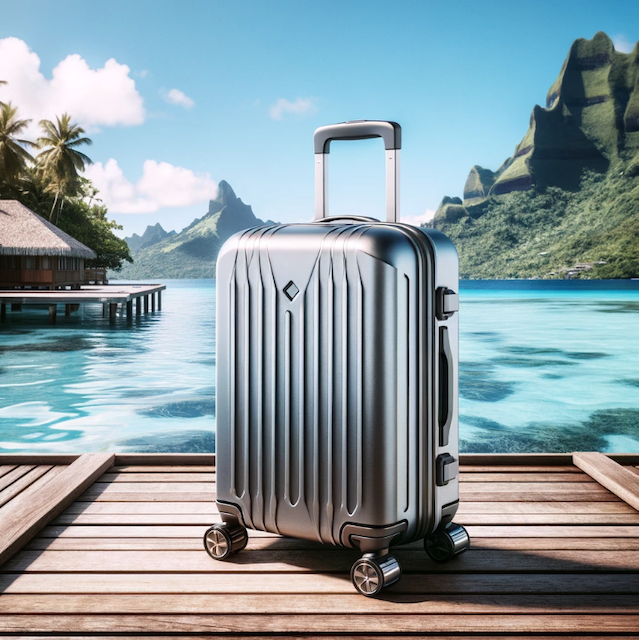

TEL: 1-608-238-6001 Email: greg@cruisingreview.com

|
|
Understanding Underseat and Carry-On Luggage Dimensions for Air Travel What is Underseat Storage on a Plane?When traveling by air, understanding luggage dimensions is crucial for a smooth experience. Underseat storage refers to the space available beneath the seat in front of you on an airplane. This area is designated for personal items such as purses, laptop bags, small backpacks, and other small bags. Knowing the size limitations for these items can help you avoid additional fees and ensure your essentials are accessible during your flight.U.S. Airlines Underseat Luggage Dimensions• General Dimensions: Typically, no item may exceed 45 linear inches combined. Most airlines specify maximum dimensions for personal items to ensure they fit under the seat.• United Airlines: Allows a personal item size of 9 inches by 10 inches by 17 inches.Types of Personal ItemsPersonal items can include purses, laptop bags, camera bags, totes, diaper bags, and small backpacks. It's important to note that items like coats and pillows do not count towards your personal item allowance. These can be brought aboard in addition to your carry-on and a personal item.What Can Be Packed in Your Personal Bag?For items you'll need during the flight, such as tablets, books, snacks, and headphones, pack them in your personal bag. This bag should be stored under the seat for easy access throughout your journey.Carry-On vs. Personal Item• Carry-On Luggage: Refers to larger items like spinner suitcases, duffel bags, or backpacks that are stored in the overhead bin. Dimensions generally should not exceed 10 inches by 16 inches by 24 inches and usually must weigh less than 35 pounds.• Personal Item: Must fit under the seat and is typically smaller than carry-on luggage.Airline-Specific Under-Seat Dimensions• Alaska Airlines: Generally, 14 inches by 12 inches by 9 inches, but specifics can vary by aircraft.• Allegiant Air: 16 inches by 15 inches by 7 inches.• American Airlines: 18 inches by 14 inches by 8 inches.• Delta Airlines: Varies by aircraft model; for example, Bombardier CRJ200 offers 18 inches by 16 inches by 10.5 inches.• Frontier Airlines: 18 inches by 14 inches by 8 inches.• JetBlue Airlines: 17 inches by 13 inches by 8 inches.• Southwest Airlines: 18.5 inches by 13.5 inches by 8.5 inches.• Spirit Airlines: 18 inches by 14 inches by 8 inches.• United Airlines: 17 inches by 10 inches by 9 inches.What Size is Carry-On Luggage?Carry-on luggage typically measures 22 inches by 14 inches by 9 inches including handles and wheels. This standard size helps ensure that everyone's luggage can fit safely in the overhead bin.Choosing the Right Luggage: Hard-Shell vs. Soft-SidedHard-Shell Luggage• Pros: Offers better protection for fragile items, durable, easy to clean, and stackable.• Cons: Generally heavier and has less flexibility in packing.Soft-Sided Luggage• Pros: Typically lighter, offers more packing flexibility, and easier access to packed items.• Cons: Less protection against impact, may not be as durable depending on the material.ConclusionChoosing between hard-shell and soft-sided luggage ultimately depends on your specific travel needs and preferences. Consider the nature of your trips, what you typically pack, and personal style preferences when selecting your travel luggage. Regardless of your choice, always check with your airline for specific luggage size and weight restrictions to avoid any travel day surprises. |

|

|
What are the dimensions of carry-on luggage? While there may be slight variations between different airlines, the accepted standard size for domestic carry-on luggage is 22 inches by 14 inches by 9 inches, which includes the handle and wheels. This size ensures that your bag—and ideally those of other travelers—fits securely in the overhead compartment. A significant advantage of using carry-on luggage is the ability to keep your belongings with you during your journey, eliminating the need to check them and hope they arrive undamaged and on time at your destination.Carry-on and Personal Item Specifications:Carry-on bags should not exceed dimensions of 22 inches in length, 14 inches in width, and 9 inches in height, including any handles and wheels. Personal items must be smaller, generally not surpassing 18 inches long, 14 inches wide, and 8 inches high. There are no weight limits specified for carry-on luggage.Understanding Carry-on and Personal Items:A carry-on bag typically refers to small suitcases, duffel bags, and weekenders that fit into an airplane's overhead bin. In contrast, personal items include smaller belongings such as travel totes, purses, laptop bags, diaper bags, and briefcases or backpacks that fit under the seat in front of you.
|

|
Dimensions for Underseat Luggage Dimensions for Underseat Luggage on U.S. AirlinesFor U.S. airlines, the typical size for underseat luggage is 18 inches by 14 inches by 8 inches. In general, no bag can exceed a total of 45 linear inches combined.United Airlines Personal Item SizeOn United Airlines, the maximum dimensions for a personal item that fits under the seat are 9 inches by 10 inches by 17 inches.Defining a Personal ItemA personal item refers to a smaller bag that fits under the seat in front of you. Examples include purses, laptop bags, camera bags, totes, diaper bags, and small backpacks. Airlines enforce strict size limits for under-seat luggage; if your personal item is too large, you may have to check it, often incurring a fee of $25 to $35.Are Purses Considered Personal Items?Yes, a purse or handbag counts as a personal item. Many travelers opt for larger handbags or tote bags to maximize their carry-on quota.Do Coats and Pillows Count as Personal Items?Coats and pillows are exempt from your personal item allowance. You can bring a coat, jacket, hat, reading material, pillow, or blanket along with your carry-on and personal item when boarding.Packing Your Personal Bag for a FlightSince accessing your carry-on from the overhead bin during flight can be inconvenient, pack essentials in your personal bag for easy access. Include items like tablets, books, snacks, and headphones that you might need during the flight. Before storing your personal bag under the seat, take out any items you’ll use while seated. For additional tips, consider learning how to efficiently pack a backpack for travel.
|

|
Guidelines for Carry-On and Personal Item Sizes Carry-On Luggage for Overhead Bins:Carry-on luggage should not exceed dimensions of 22 inches in length, 14 inches in width, and 9 inches in height, including handles and wheels. These dimensions ensure that your bag can be securely stored in the overhead bin of most airplanes.Personal Items for Underseat Storage:Personal items should be no larger than 18 inches long, 14 inches wide, and 8 inches high. This allows them to fit comfortably under the seat in front of you.Weight Restrictions:There are typically no weight restrictions for carry-on luggage, but it's advisable to check with specific airlines as policies can vary.Standard Size for Carry-On LuggageWhile the size of carry-on luggage can vary slightly among different airlines, the general standard size for domestic flights is 22 inches by 14 inches by 9 inches, including any handles and wheels. Adhering to these dimensions helps to ensure that your luggage fits in the overhead bin, facilitating a smoother boarding process for all passengers. One of the primary advantages of sticking to carry-on luggage is the convenience of managing your belongings yourself, reducing the risk of lost or damaged items during transit.
|

|
CARRY-ON LUGGAGE SIZES: INTERNATIONAL AIRLINES AIRLINE SIZE IN INCHES WEIGHT/LBSAeroMexico 21.5 x 15.7 x 10 22Air Canada 21.5 x 15.7 x 9 --Air France 1.7 x 13.8 x 9.9 26Air New Zealand 46.5 inches total linear 15Alitalia 21.7 x 13.8 x 9.9 17.6All Nippon Airways 22 x 16 x 10 22El Al Airlines 22 x 17.7 x 9.8 17.6Iceland Air 21.6 x 15.7 x 7.8 22Japan Airlines 22 x 18 x 10 17.5KLM 21.5 x 13.5 x 10 26Korean Air 21.7 x 15.7 x 7.9 25Lufthansa 21.7 x 15.7 x 9 17.6Norwegian Air 21.7 x 15.7 x 9 22Philippine Airlines 22 x 14 x 9 15Qantas Airways 22 x 14 x 9 22Saudi Arabian Airlines 62 total linear 15.4Scandinavian Airlines 21.7 x 15.7 x 9 17.6Singapore Airlines 45.3 total linear 15.4Thai Airways 22 x 18 x 10 15Virgin Atlantic 22 x 14 x 9 22
|
| CONTACT TEL: 608-238-6001 Email: greg@cruisingreview.com | AMP | PDF |